
Roots of Hair Lore
The very strands that crown us hold whispers of antiquity, a silent dialogue with the earth itself. Before the dawn of colonial influence reshaped landscapes and cultural expressions, African hair care was a testament to ingenuity, an intimate connection with the natural world. It was a practice deeply rooted in the soil, the forests, and the very rhythms of life, far removed from the synthetic formulations of later eras.
To truly understand this ancestral wisdom, one must first perceive hair not merely as a biological appendage, but as a living canvas, a cultural marker, and a conduit for spiritual expression. The materials employed were not simply ingredients; they were gifts from the land, chosen with discerning hands and an understanding passed down through generations.
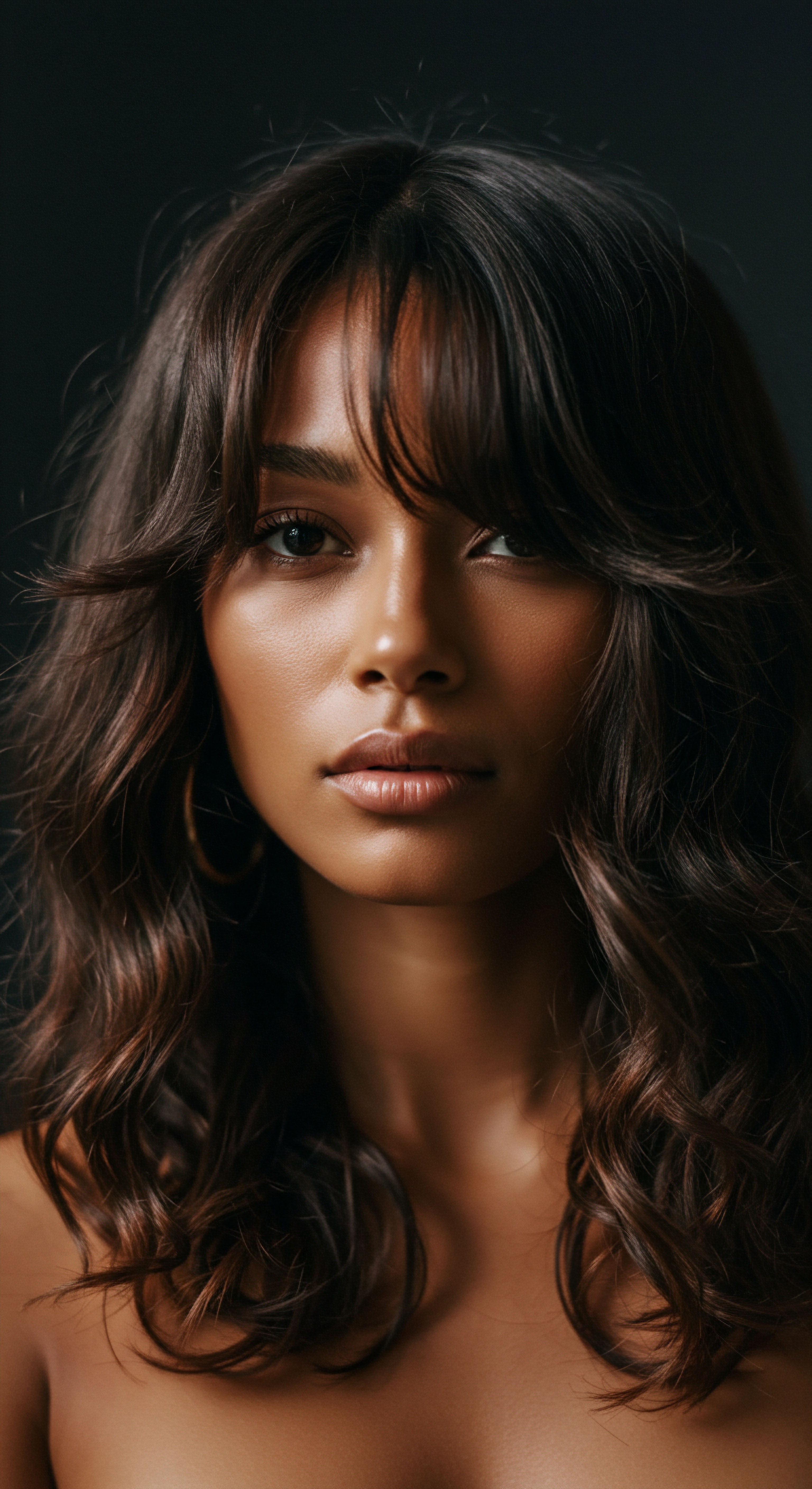
From Earth’s Bounty
The continent’s diverse ecosystems offered an astonishing array of resources, each contributing its unique properties to the health and adornment of hair. From the arid savannas to the verdant rainforests, communities adapted their practices to what was readily available, forging a deep symbiosis with their environment. These materials served multiple purposes ❉ cleansing, conditioning, styling, and protecting the hair from the elements.
Ancestral African hair care was an intimate connection with the natural world, utilizing earth’s gifts for cleansing, conditioning, styling, and protection.
One might consider the ubiquitous Shea Butter, a golden balm extracted from the nuts of the shea tree (Vitellaria paradoxa), a staple across West Africa. Its rich emollients provided profound moisture, shielding strands from the harsh sun and dry winds. For centuries, its production has been a cornerstone of women’s economic independence in many regions, a practice that persists even today.
Similarly, Cocoa Butter, derived from the cacao bean, offered a fragrant, softening touch, particularly valued in areas where cacao cultivation flourished. These plant-based fats were not merely applied; they were often warmed, sometimes infused with other botanicals, transforming into potent elixirs that sealed in hydration and imparted a healthy sheen.
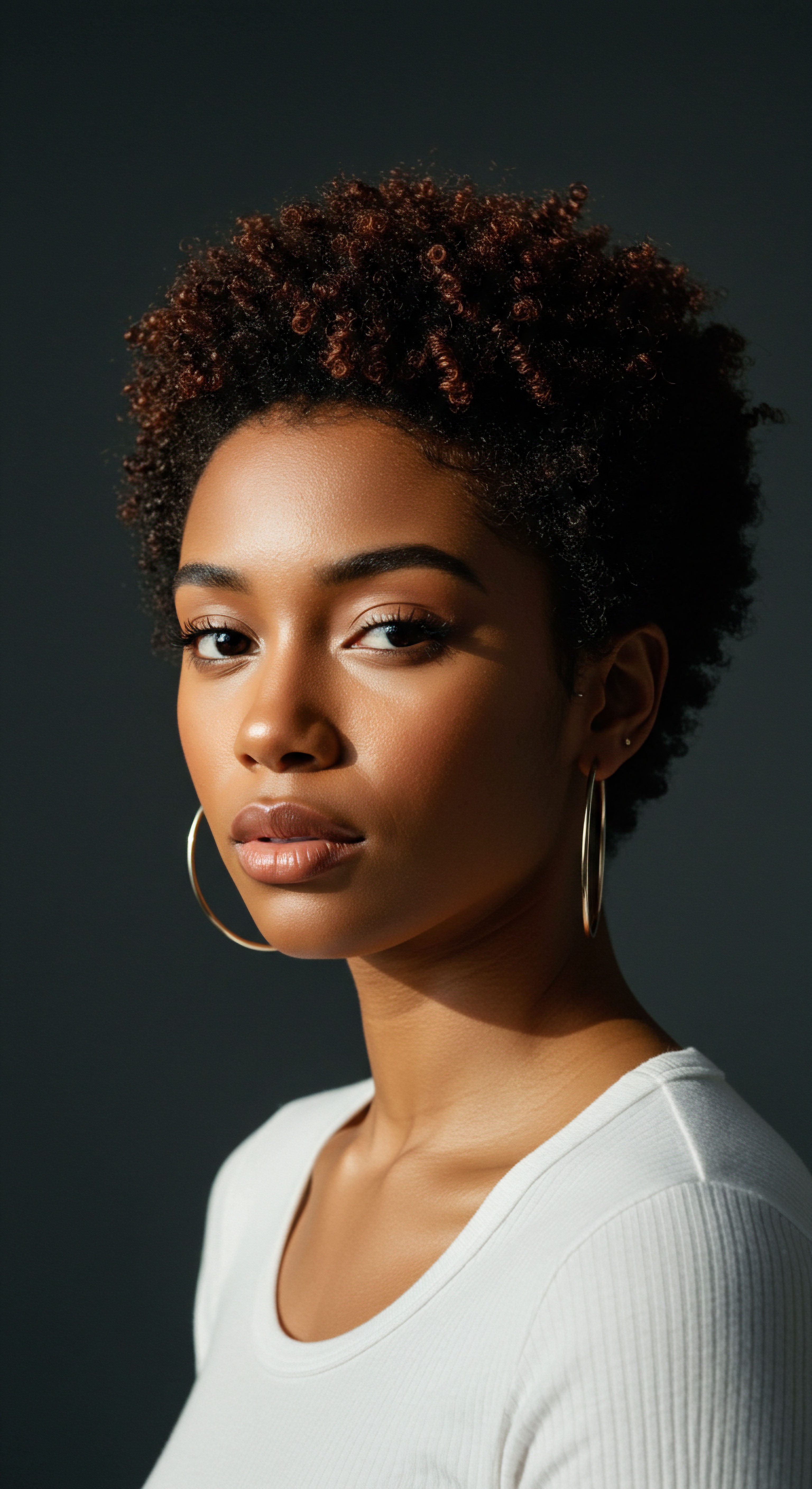
What Botanical Extracts Sustained Pre-Colonial African Hair?
Beyond the rich butters, a vast pharmacopoeia of botanical extracts played a role. Leaves, barks, and roots were often crushed, steeped, or boiled to create rinses, pastes, and oils.
- Chebe Powder ❉ Hailing from Chad, this finely ground mixture of seeds, resins, and herbs (including Croton zambesicus, musk ambrette, and cloves) was traditionally used by Basara women. They applied it to their hair, often braided, to reduce breakage and promote length retention. The practice involved dampening the hair, applying oil, then the powder, and re-braiding, a cycle repeated to fortify the strands.
- Moringa ❉ The leaves of the moringa tree (Moringa oleifera), found across many parts of Africa, were known for their nutrient density. When processed into a powder or oil, moringa could offer vitamins, minerals, and amino acids to the scalp and hair, promoting strength and vitality.
- Hibiscus ❉ The vibrant petals of the hibiscus flower were not just for beauty; infusions from hibiscus were used as a conditioning rinse, known to add shine and softness, and sometimes even to gently darken hair over time. Its mucilaginous properties provided a natural slip, aiding in detangling.
The use of Aloe Vera, a succulent plant found widely across the continent, provided soothing relief for scalp irritations and offered hydrating properties to the hair. Its gel-like consistency made it a natural detangler and conditioner, often applied fresh from the plant.

Mineral Gifts for Hair Health
The earth also provided mineral resources that were ingeniously incorporated into hair care. Clays, rich in minerals, served as natural cleansers and detoxifiers for the scalp.
Rhassoul Clay, sourced from the Atlas Mountains of Morocco, is a prime example. This mineral-rich volcanic clay, when mixed with water, transforms into a silky paste that gently cleanses the hair and scalp without stripping natural oils. Its unique molecular structure allowed it to absorb impurities while simultaneously providing minerals like silica, magnesium, and calcium, contributing to hair strength and elasticity. Its use was documented for centuries, not just for hair but also for skin, highlighting a holistic approach to personal care.
Other less documented but regionally specific clays and earths were likely used in various communities, serving similar purposes of cleansing, fortifying, and even providing subtle color variations for adornment. These materials were not just functional; they held symbolic weight, connecting the individual to the very ground they walked upon.
| Material Shea Butter |
| Source Region West Africa |
| Primary Benefit Moisture, Protection, Softening |
| Material Chebe Powder |
| Source Region Chad |
| Primary Benefit Breakage Reduction, Length Retention |
| Material Rhassoul Clay |
| Source Region Morocco |
| Primary Benefit Gentle Cleansing, Mineralization |
| Material Moringa |
| Source Region Widespread Africa |
| Primary Benefit Nutrient Delivery, Strength |
| Material Aloe Vera |
| Source Region Widespread Africa |
| Primary Benefit Soothing, Hydrating, Detangling |
| Material These materials exemplify the deep knowledge of natural resources for hair wellness. |

Ritual and Practical Wisdom
Moving from the foundational elements to the practical application, we uncover the deliberate actions and shared knowledge that shaped pre-colonial African hair care. This was not a haphazard collection of techniques, but a carefully observed sequence of steps, often imbued with cultural significance and communal participation. The daily or periodic practices of hair tending were integral to personal well-being and social connection, a quiet understanding passed from elder to youth.
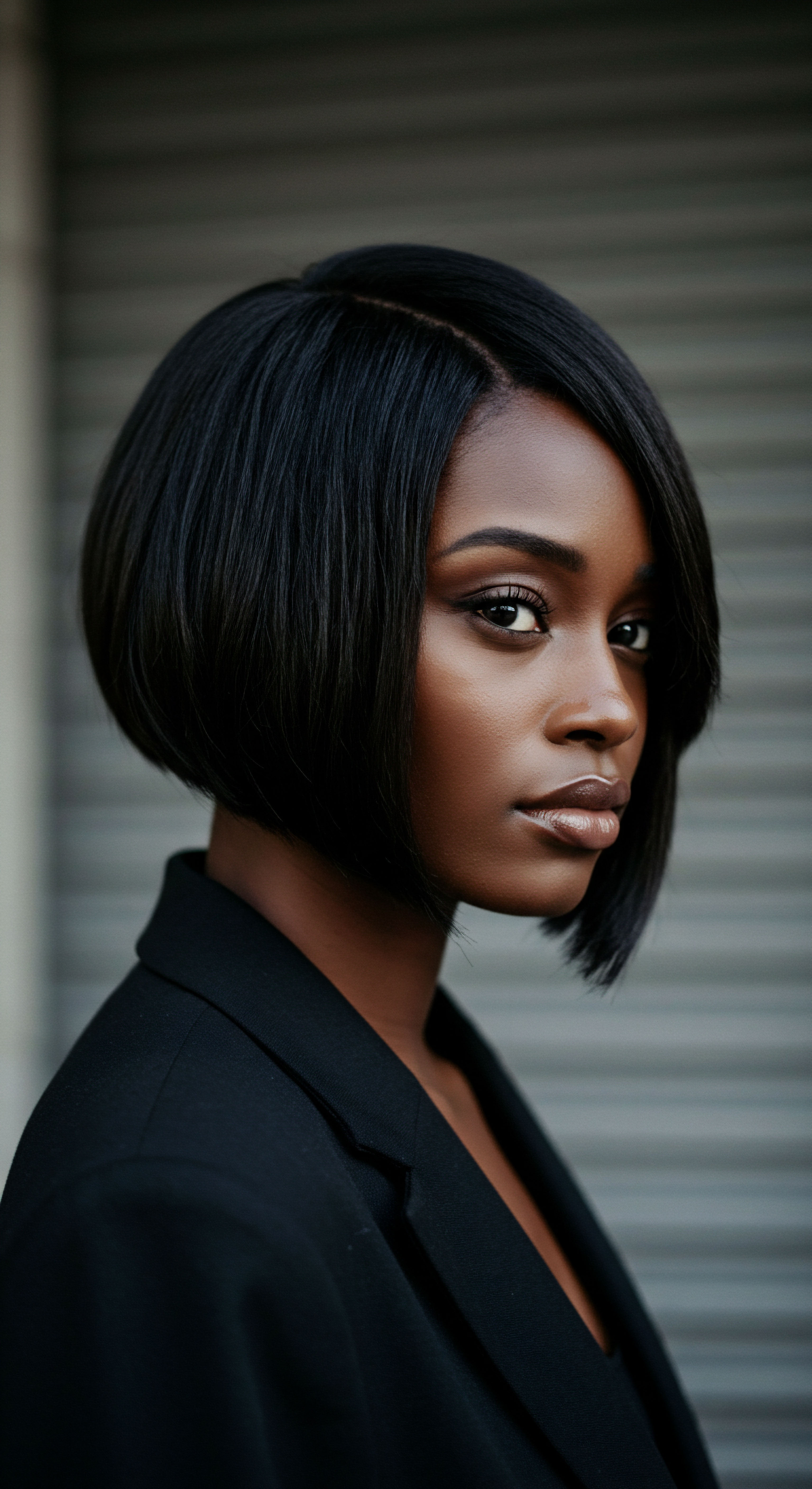
The Hands That Nurtured
Hair care was often a communal activity, particularly among women. The act of braiding, twisting, or oiling another’s hair fostered bonds, facilitated storytelling, and served as a vehicle for transmitting traditional knowledge. This shared experience underscored the social dimension of hair, transforming a seemingly mundane task into a moment of connection and cultural continuity. The skilled hands of mothers, aunts, and sisters worked with practiced grace, their movements a dance of precision and care.

How Were Natural Materials Prepared for Hair Care?
The preparation of these natural materials was itself an art. Raw shea nuts were processed through a laborious series of crushing, roasting, grinding, and kneading to extract the butter. Clays were meticulously sifted and then mixed with water to achieve the desired consistency for cleansing or conditioning. Herbal concoctions involved careful selection, drying, and pulverizing of plants, followed by steeping in water or oil to extract their beneficial compounds.
Consider the meticulous process involved in preparing Black Soap, a traditional cleanser originating from West Africa. This soap, often called Alata Samina in Ghana or Ose Dudu in Nigeria, is crafted from the ash of plantain peels, cocoa pods, and palm tree leaves, combined with oils like palm oil or shea butter. The ashes provide the lye, which reacts with the oils to create a gentle yet effective cleansing agent. This traditional method, requiring skill and patience, produced a soap that cleansed without stripping the hair, leaving it soft and manageable.
Pre-colonial African hair care was a meticulous art, transforming raw materials into nourishing elixirs and protective styles.
The application methods were equally considered. Oils and butters were massaged into the scalp to stimulate circulation and nourish the hair follicles. Rinses were poured over the hair, allowed to soak, and then often rinsed with clean water.
Pastes and masks were applied, left for specific durations, and then carefully washed out. The intent was always to work with the hair’s natural texture, enhancing its innate beauty and strength rather than attempting to alter its fundamental character.

Styling with the Earth’s Palette
Styling was not merely about aesthetics; it was a protective measure. Braids, twists, and locs were not just expressions of artistry; they shielded the hair from environmental damage, reduced tangling, and promoted length retention. The materials aided in these protective styles.
- Plant Fibers ❉ Certain plant fibers, like those from sisal or raffia, were sometimes used to extend or augment natural hair in intricate braided styles, adding volume and allowing for more elaborate designs. These were carefully prepared to be soft and pliable, integrating seamlessly with the hair.
- Red Earth Pigments ❉ In some cultures, particularly among the Himba people of Namibia, a paste of red ochre (Otjize) mixed with butterfat and aromatic resin was applied to the hair and skin. This provided not only a distinctive reddish hue but also acted as a protective layer against the sun and insects. This practice speaks to a blend of aesthetic, protective, and symbolic functions.
- Ash and Clay Pastes ❉ Beyond cleansing, certain ashes or fine clay powders, when mixed with oils, could be used to create stiffening pastes that helped hold intricate styles or provide a subtle tint.
The careful selection and preparation of these materials underscore a deep, experiential knowledge of their properties. This was a science born of observation and repeated practice, a wisdom that respected the inherent qualities of both the hair and the natural elements used to care for it.
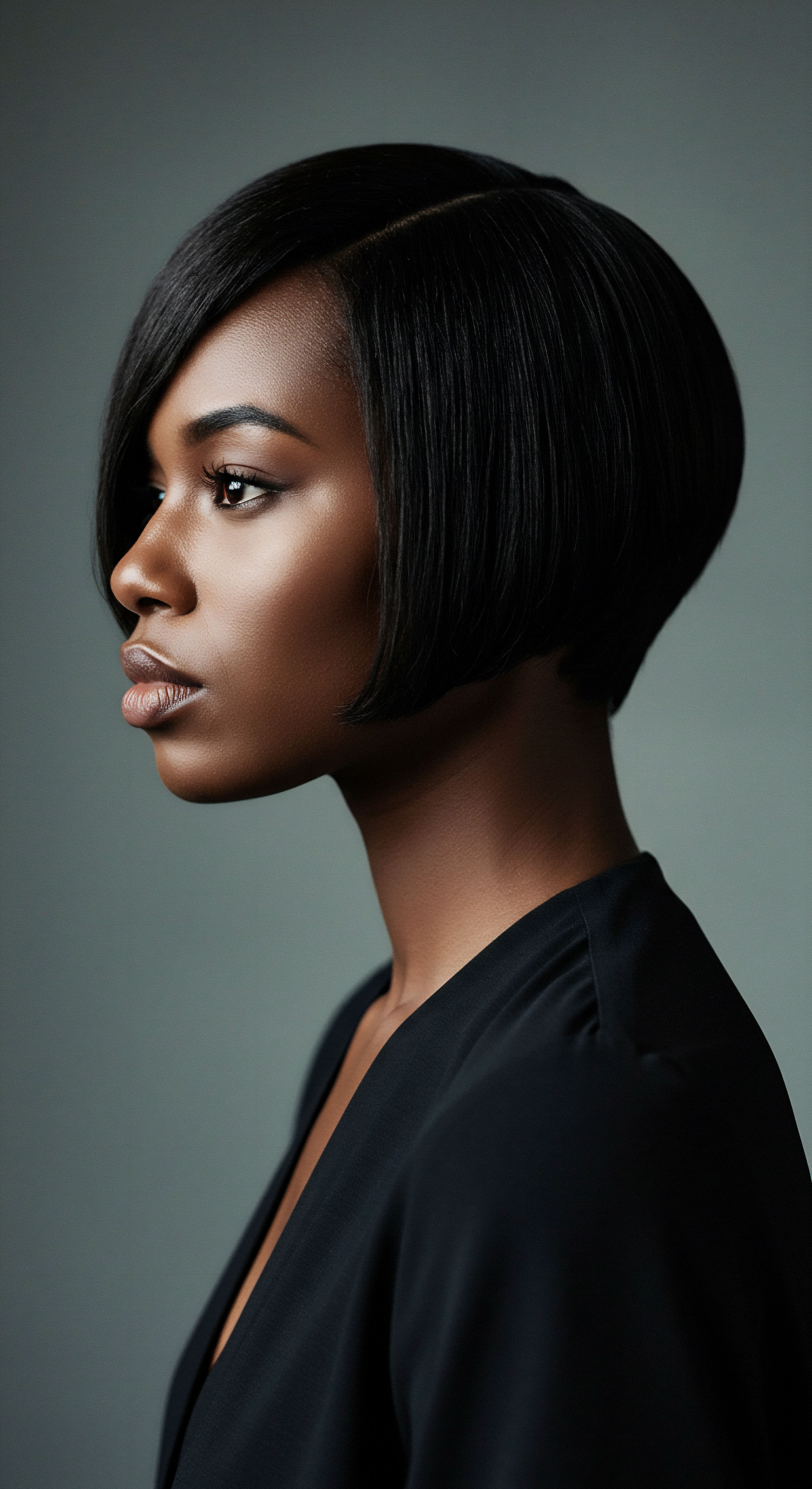
Relay of Ancestral Wisdom
To truly appreciate the depths of pre-colonial African hair care, we must move beyond a simple catalog of materials and practices, seeking instead to comprehend the complex interplay of ecological knowledge, cultural significance, and ancestral memory that shaped these traditions. It is not merely about what was used, but the sophisticated understanding that underpinned these choices, a wisdom that often challenges modern, reductionist views of beauty and wellness. This section endeavors to connect these historical threads to broader implications, considering the enduring impact and sometimes overlooked complexities of these practices.

Ecological Ingenuity and Adaptation
The selection of natural materials was a profound act of ecological adaptation. Communities did not merely pick random plants; they cultivated a sophisticated botanical knowledge, understanding the specific properties of local flora and fauna. This regional specificity meant that hair care practices varied significantly across the continent, reflecting the unique biodiversity of each area.
For instance, the prevalence of baobab oil in drier regions of Southern and Eastern Africa, derived from the seeds of the majestic baobab tree, speaks to this adaptability. Baobab Oil is rich in omega fatty acids, known for its moisturizing and softening capabilities, perfectly suited to combating arid conditions.
The sustainability of these practices was inherent. Materials were harvested with respect for the environment, often ensuring regeneration and continuity. This contrasts sharply with modern industrial processes that frequently deplete resources and generate waste. The reciprocal relationship between humans and their environment was central to the efficacy and longevity of these traditions.

What Does Pre-Colonial Hair Care Reveal About Societal Values?
Hair, and its care, held profound social and spiritual weight in pre-colonial African societies. Styles could signify age, marital status, tribal affiliation, social standing, or even religious beliefs. The materials used, and the rituals surrounding their application, were therefore deeply embedded in the social fabric.
Consider the impact of cultural disruption on these practices. A study published in the Journal of Black Studies highlights how colonial imposition often devalued traditional African beauty standards, including hair practices, favoring Eurocentric aesthetics. This shift led to a gradual decline in the intergenerational transmission of indigenous hair care knowledge in some areas, replacing it with commercially produced, often harmful, chemical treatments.
For instance, the widespread introduction of chemical relaxers in the 20th century, often marketed with promises of social acceptance, directly contributed to a departure from traditional, natural hair care methods. This cultural displacement is a complex phenomenon, demonstrating how external forces can alter intimate personal practices and their associated knowledge systems.
Pre-colonial hair care reflects a deep ecological understanding and served as a powerful medium for social, spiritual, and communal expression.
The communal aspect of hair care also served as a vital mechanism for social cohesion and the transmission of cultural norms. As hands worked through strands, stories were told, wisdom imparted, and communal bonds strengthened. This shared experience was a form of education, a living library of knowledge that transcended mere words. The materials were not just tools; they were facilitators of this cultural relay.
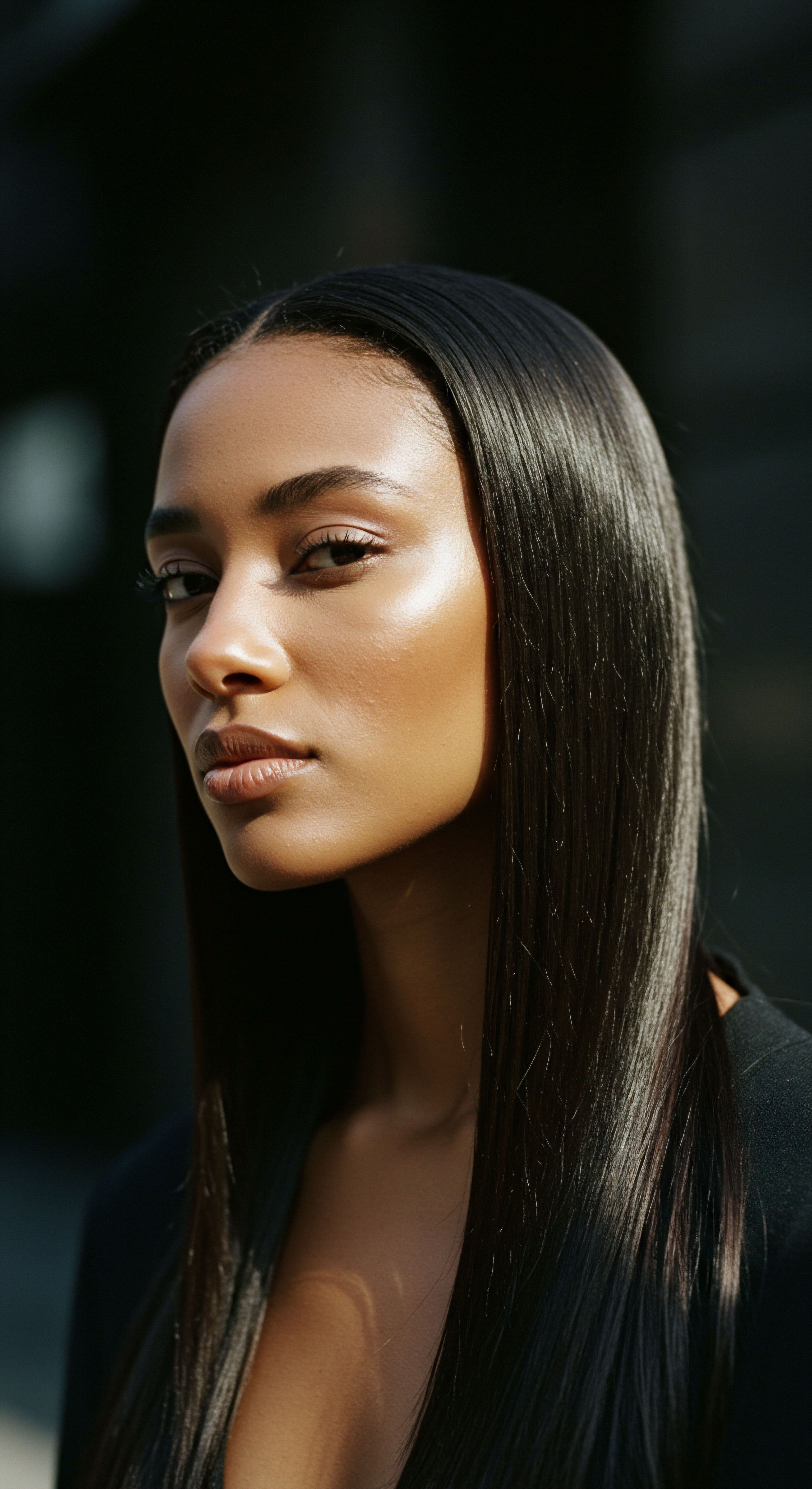
The Science Within the Tradition
While not codified in modern scientific terms, the effectiveness of these natural materials rested on empirical observation and a deep understanding of their chemical properties. The knowledge of which plant offered slip for detangling, which oil provided moisture, or which clay cleansed without stripping was a form of indigenous science.
For example, the use of African Ginger (Zingiber officinale), often steeped to create rinses, would have offered its natural anti-inflammatory and antimicrobial properties to the scalp, promoting a healthy environment for hair growth. Similarly, the saponins present in certain plant barks and leaves provided the natural lather for cleansing, long before synthetic surfactants were conceived. The understanding of these biochemical interactions, albeit through a lens of traditional knowledge, was sophisticated and effective.
| Material Example Shea Butter |
| Primary Function Emollient, Sealant |
| Implied Chemical Property Fatty Acids (Oleic, Stearic) |
| Material Example Rhassoul Clay |
| Primary Function Cleanser, Detoxifier |
| Implied Chemical Property High Mineral Content (Silica, Magnesium) |
| Material Example Black Soap |
| Primary Function Cleanser |
| Implied Chemical Property Naturally occurring Lye (from ash), Glycerin |
| Material Example Hibiscus |
| Primary Function Conditioner, Shine Enhancer |
| Implied Chemical Property Mucilage, Anthocyanins |
| Material Example African Ginger |
| Primary Function Scalp Treatment |
| Implied Chemical Property Anti-inflammatory Compounds (Gingerols) |
| Material Example Ancestral knowledge often intuited the biochemical benefits of natural resources. |
The ongoing research into ethnobotany continues to validate many of these traditional uses, demonstrating the efficacy of indigenous practices. The contemporary natural hair movement, in many ways, is a re-connection to this ancestral wisdom, seeking to reclaim and adapt these time-honored methods for modern life. It is a recognition that the “old ways” often hold profound, scientifically sound solutions.

Reflection on Enduring Legacies
The echoes of pre-colonial African hair care resonate deeply within contemporary practices, a testament to the enduring power of ancestral knowledge. These traditions, born of deep respect for the earth and an understanding of hair as both adornment and cultural signifier, offer more than just historical footnotes. They present a holistic paradigm for wellness, where beauty is inextricably linked to natural harmony and communal connection.
As we navigate the complexities of modern hair care, there is profound wisdom to be found in the quiet strength of shea butter, the cleansing power of clay, and the protective embrace of a meticulously crafted braid. This legacy reminds us that true care begins with listening to the whispers of the past, allowing the earth’s bounty to guide our hands and nourish our strands.

References
- Byfield, Judith A. The Culture of Hair in Modern African American Society. Duke University Press, 2012.
- Ezema, O. N. Traditional African Hair Styles and Their Meanings in Nigerian Society. University of Nigeria, 2017.
- Gale, Robert L. African Hair ❉ Its Cultural and Social Significance. Palgrave Macmillan, 2016.
- Lewis, Andrea. African Traditional Hair Care ❉ A Comprehensive Guide. Kimaathi Publishing, 2010.
- Opoku, Kwasi. African Traditional Religion ❉ An Introduction. Waveland Press, 2005.
- Shereen, E. R. “African Indigenous Knowledge Systems and the Use of Traditional Hair Care Products.” Journal of Black Studies, vol. 45, no. 5, 2014, pp. 451-468.
- Sleeman, Mark. The African Baobab ❉ A Review of its Economic and Nutritional Importance. CABI, 2011.
- Van der Waal, Cornelis. Hair ❉ A Cultural History of African Hair in Southern Africa. Sun Media, 2013.